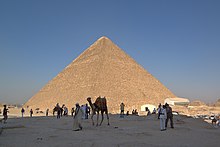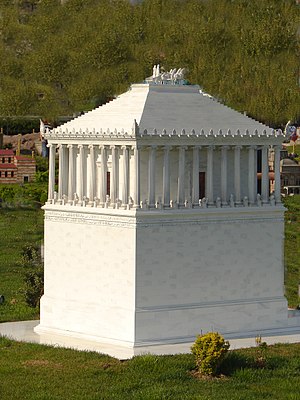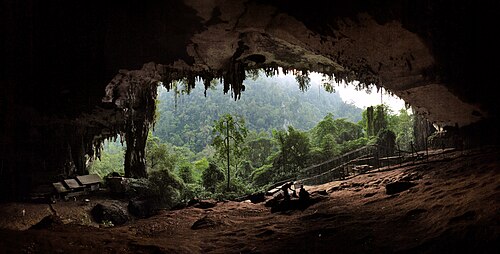The seven wonders that are most widely agreed upon as being in the original list are the Seven Wonders of the Ancient World, which was compiled by ancient Greek historians and is thus confined to the most magnificent structures known to the ancient Greek world. Of all the Ancient Wonders, the pyramids alone survive.
The Pyramids of Egypt are three pyramids at Giza, outside modern Cairo. The largest pyramid, built by Khufu (Cheops), a king of the fourth dynasty, had an original estimated height of 482 ft (now approximately 450 ft). The base has sides 755 ft long. It contains 2,300,000 blocks; the average weight of each is 2.5 tons. Estimated date of completion is 2680 B.C.
The Hanging Gardens of Babylon were supposedly built by Nebuchadnezzar around 600 B.C. to please his queen, Amuhia. They are also associated with the mythical Assyrian queen Semiramis. Archeologists surmise that the gardens were laid out atop a vaulted building, with provisions for raising water. The terraces were said to rise from 75 to 300 ft.
 |
The Statue of Zeus (Jupiter) at Olympia was made of gold and ivory by the Greek sculptor Phidias (5th century B.C.). Reputed to be 40 ft high, the statue has been lost without a trace, except for reproductions on coins.
The Temple of Artemis (Diana) at Ephesus was begun about 350 B.C., in honor of a non-Hellenic goddess who later became identified with the Greek goddess of the same name. The temple, with Ionic columns 60 ft high, was destroyed by invading Goths in A.D. 262.
The Mausoleum at Halicarnassus was erected by Queen Artemisia in memory of her husband, King Mausolus of Caria in Asia Minor, who died in 353 B.C. Some remains of the structure are in the British Museum. This shrine is the source of the modern word mausoleum.
The Colossus at Rhodes was a bronze statue of Helios (Apollo), about 105 ft high. The work of the sculptor Chares, who reputedly labored for 12 years before completing it in 280 B.C., it was destroyed during an earthquake in 224 B.C.
 The Pharos (Lighthouse) of Alexandria was built by Sostratus of Cnidus during the 3rd century B.C. on the island of Pharos off the coast of Egypt. It was destroyed by an earthquake in the 13th century.
The Pharos (Lighthouse) of Alexandria was built by Sostratus of Cnidus during the 3rd century B.C. on the island of Pharos off the coast of Egypt. It was destroyed by an earthquake in the 13th century.










